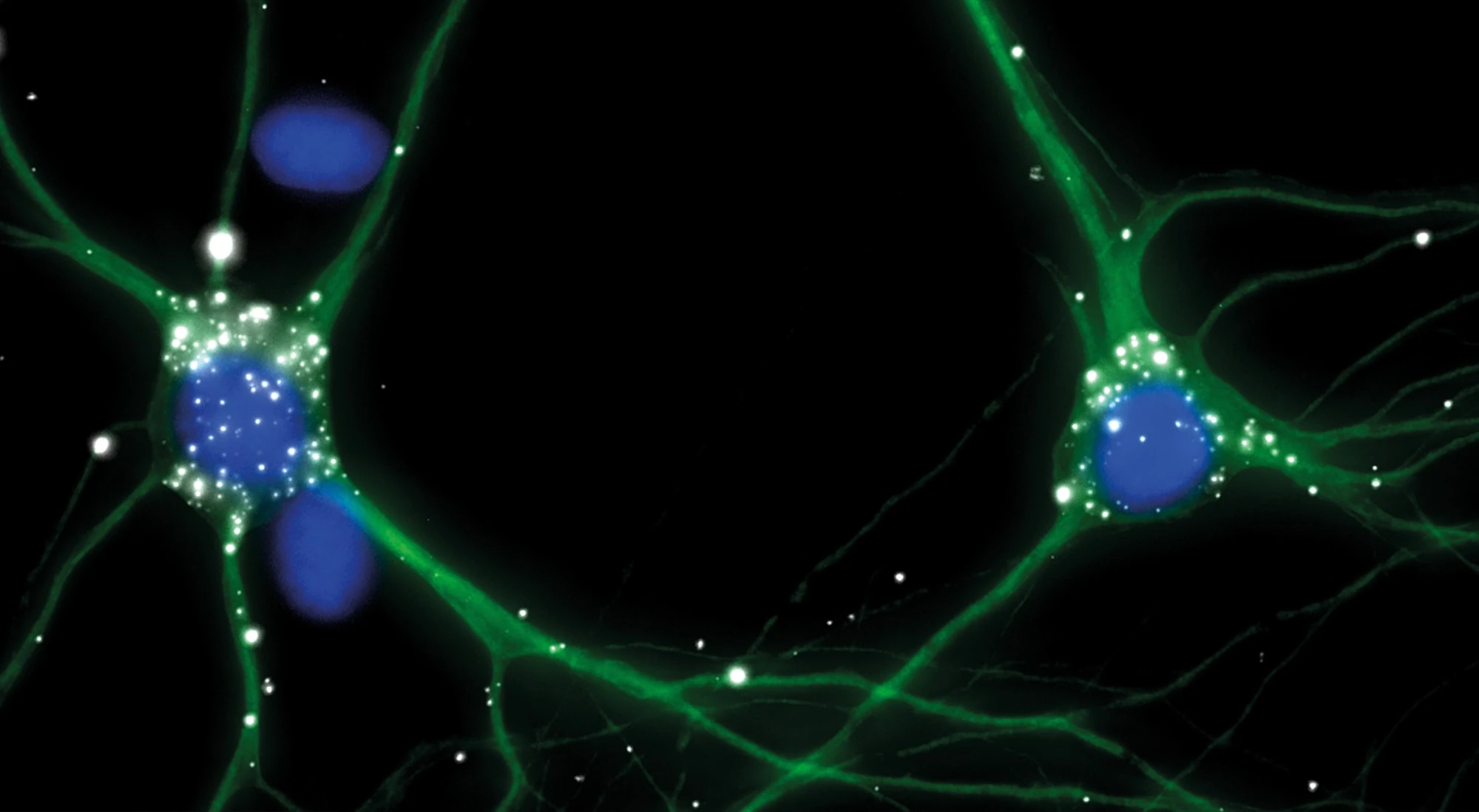Lessons by post
Learning involves constant restructuring of nerve-cell connections
December 2017

© T. Sharangdhar, M. Kiebler, LMU
Fluorescent in situ hybridisation in hippocampal neurons to visualize intron containing Calmodulin3 mRNA localization (in White). The dendritic processes of the neurons are colored green while their nuclei are blue.
At the cellular level, learning and memory require continuous readjustment of the strength of synaptic junctions – the functional connections between nerve cells. These modifications are achieved by the incorporation into individual synapses of proteins that modulate the efficiency of intercellular signal transmission. The blueprints for the synthesis of these molecules, in the form of messenger RNAs (mRNAs), are delivered to active synapses by a dedicated transport system. An international team led by LMU biochemist Professor Michael Kiebler has now demonstrated that a key factor involved in this transport binds specifically to regions of its mRNA cargo that lack protein-coding information, and that release of the RNAs to enable protein synthesis is dependent on synaptic activity. This localized delivery system also enables particular synapses to be specifically modified without concomitant alteration of their neighbors.



